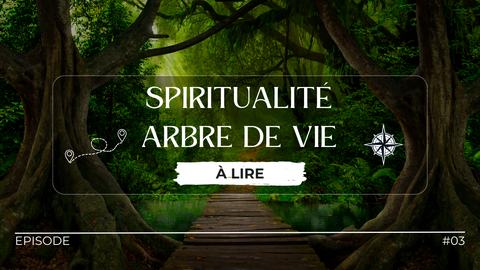
The Tree of Life and Personal Development
of reading
Parallels with Human Growth
The symbolism of the Tree of Life offers a powerful analogy for understanding human growth. Just like the tree, individuals have their roots deep in their past, made up of passed down experiences, values and traditions. These roots provide the foundation on which their future growth is built.
The branches of the Tree of Life represent the different paths of development and exploration that each individual takes during their life. Each new experience, each learning and each challenge contributes to the expansion and flourishing of these branches. In the same way, individuals develop, expanding their understanding of the world and themselves through interactions, learning and life experiences.
Observing the growth cycles of the Tree of Life—the seasons of flowering, dormancy, and renewal—reflects the ups and downs of human life. Each season brings its own challenges and opportunities, and each phase is an opportunity to grow and learn. This reminds individuals that growth is not linear, but a cyclical process of constant transformation.
Recognizing these parallels between the growth of the Tree of Life and that of individuals can inspire a feeling of deep connection with the natural world and encouragement to fully embrace the potential for personal growth and transformation.
The Tree of Life as a Metaphor for Spiritual Evolution
The Tree of Life can also serve as a powerful metaphor for an individual's spiritual journey. The deep roots of the Tree of Life represent connection with fundamental principles, spiritual values and sacred traditions. These roots provide a firm anchor in spiritual consciousness, providing a solid foundation for further growth and expansion.
The ever-growing branches of the Tree of Life symbolize the evolution of spiritual consciousness. Each branch represents a step on the path to enlightenment, wisdom and self-realization. The individual is encouraged to explore different spiritual paths, develop their understanding of the nature of existence and broaden their vision of the divine.
The Tree of Life suggests that spiritual growth is a continuous process of transformation and renewal. The leaves of the tree can be interpreted as moments of spiritual clarity, where the individual achieves a deeper understanding of their own being and their relationship with the universe.
To cultivate one's own spiritual growth, the individual can adopt practices such as meditation, contemplation and prayer. These practices help cultivate consciousness and expand perception, paving the way for a greater connection with the divine and a deeper understanding of the nature of existence.
By embracing the Tree of Life analogy, individuals are encouraged to embark on a journey of personal and spiritual growth, exploring their own essence and striving to realize their full potential in the world.
In addition
In this series of articles, we have explored in depth the symbolism of the Tree of Life, its importance in different cultures and spiritual traditions, and its practical application in personal and spiritual growth. We have looked at the different representations of the Tree of Life, from its meaning of branches and roots to the symbolism of the colors associated with it. We also explored its role in contemporary religions and its potential as a metaphor for spiritual evolution. Finally, we offered a practical guide to creating your own personal Tree of Life, as well as inspiring testimonials from people who have undertaken this creative journey.
We now invite our readers to join the conversation by sharing their own experiences and interpretations of the Tree of Life. What does the Tree of Life represent to you? How have you integrated it into your daily life or spiritual practice? We look forward to hearing your thoughts and continuing to explore the depths of this rich and fascinating symbol together.
















